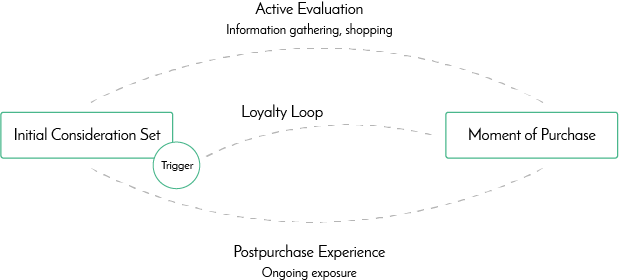Why Content Marketing is a Necessary Evil
Let’s dive right in. Content marketing can be viewed as evil. Yes, I said evil. Why? Well, to do content marketing right, you have to put out a lot of content in the form of blog articles, white papers, ebooks, case studies, reports, infographics, etc. Creating all of this content often requires more time than you have, leaving little room for implementing the rest of your marketing strategy (of course, using a content discovery tool to help curate some of this content can free up some of your time!).
How much is a lot of content? To be somewhat conservative, let’s say 2 blog posts a week, a case study every 1-2 months and an ebook every 2-3 months, with infographics and reports peppered in as stats become available. Add this on top of social media management, inbound marketing and the like, and it sounds like tons of fun, right?
Whether you want to accept it or not, content marketing is, in fact, necessary. Fifteen years ago it was not. But since then, the fundamental way that consumers shop has made evolutionary changes.
Back in 2009, McKinsey & Company started talking about the Consumer Decision Journey (CDJ) - a model that replaces the traditionally accepted linear purchase funnel (Figure 1).
Figure 1: Linear Purchase Funnel

The CDJ (Figure 2) defines purchase decisions as a circular journey, where consumers start with an initial consideration set of brands, go on to actively evaluate brands (and perhaps add new ones that they come across as they research), make the purchase, and then go through post purchase consideration (based on this evaluation they become loyal customers and make repeat purchases, or decide to try a new brand).
Figure 2: Consumer Decision Journey

When the traditional, linear model held true, marketers were in full control of how and when people received information about products. But now that consumers have easy access to the Internet (and are addicted to it), they are in control of how and when they receive information - fundamentally shifting the balance of power. Now, when consumers are aware of a want or need, they can do online research to find information to aid their decision. What they find heavily influences what they end up buying. So, it is safe to assume, if you do not have content that is able to be found during this consideration period, you’re not going to be part of a customer’s purchasing decision.
In the 90’s and prior, it was accepted that people went through three stages: they see an ad (the stimulus), go to the store and see the product on the shelf (the First Moment of Truth), then buy the item and experience it (the Second Moment of Truth).
In 2011, Google conducted a study analyzing this model, and discovered a step that occurs between the stimulus and the First Moment of Truth: the Zero Moment of Truth (ZMOT). The Zero Moment of Truth is the period after a consumer identifies a need or sees a stimulus and before they physically buy a product. It’s the research/exploratory phase (Figure 3). For example, if a consumer wants new gym shoes, they may do an online search for “comfortable running shoes under $100”. They will see several brands pop up, narrow it down to a few, and then run queries looking for consumer reviews about different features of the shoe. By the time the individual is finished researching and gets to the store, their decision is already made.
Figure 3: Zero Moment of Truth

You can extend this model into 2015 and add mobile research to the equation, where the Zero Moment of Truth happens at the shelf, as well. For example, imagine you are in a store and go to purchase a product, but you stop because there are several brands to choose from - none of which you are overly familiar with. You then take out your phone and look for reviews and brand information. You decide to buy brand B based on the information you find.
In essence, content marketing is important because consumers say it is. Today, people crave information and making informed decisions:1
And really, with access to so much information nowadays, shame on a consumer if they make an uniformed decision that they end up regretting.
Ultimately, where you succeed and where you fail is online. If you are not putting out enough content that is interesting, useful and findable for your target audience, your competitors likely are. They are the ones being found, they are building goodwill by providing useful information, and they are going to be what the consumer buys. In this scenario, the only reason you lose business is simply because you didn’t appear in the consideration set, the Zero Moment of Truth.
Resources:
1https://ssl.gstatic.com/think/docs/2011-winning-zmot-ebook_research-studies.pdf 2http://www.mckinsey.com/insights/marketing_sales/the_consumer_decision_journey 3https://www.thinkwithgoogle.com/articles/zmot-why-it-matters-now-more-than-ever.html 4http://adwords.blogspot.com/2011/07/zero-moment-of-truth-new-marketing.html